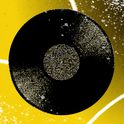A Woman Looking at Men Looking at Women by Siri Hustvedt (Sceptre, £20)
In 1959 the physicist and novelist CP Snow famously described intellectual life in western society as riven into “two cultures”: the best brains in science and the humanities operated in a state of mutual incomprehension of which many were foolishly proud. In the introduction to these essays, Siri Hustvedt sees that division as worsening, partly because increased specialisation means that even colleagues working in the same department no longer understand each other’s research. Its misleading title suggests a book on sexual politics, but the uniting theme here is borders and the divisions we perceive—often wrongly, Hustvedt argues—not only between men and women, but brain and body, self and others, and the “wobbly categories” of various mental illnesses. Readers will recognise many of the author’s interests—neuroscience, art and the ambiguity of selfhood—from novels such as What I Loved and The Summer Without Men. Here, with more room to expand on those ideas and research (including a book-length essay on the relationship of mind to body), she impresses as a writer of blazing intelligence and curiosity. Question marks abound in the text. Is it only the brain that thinks, Hustvedt wonders, or do other organs “think” in some way, too? Is ambiguity dangerous or is it liberating? Why are the sciences regarded as hard and masculine and the arts and the humanities as soft and feminine? What does “chemical imbalance” really mean? Could conscious memory and imagination be a single faculty? This is fertile and fascinating territory for scientists and humanists alike.
Books in brief: A Woman Looking at Men Looking at Women
The divide between the "two cultures" is worsening
December 14, 2016












